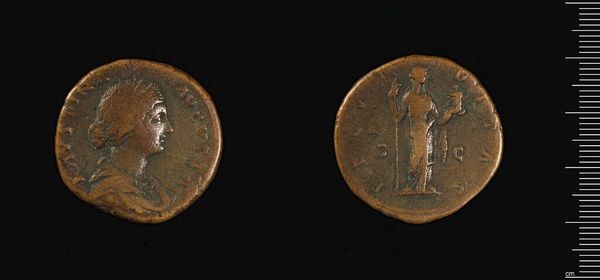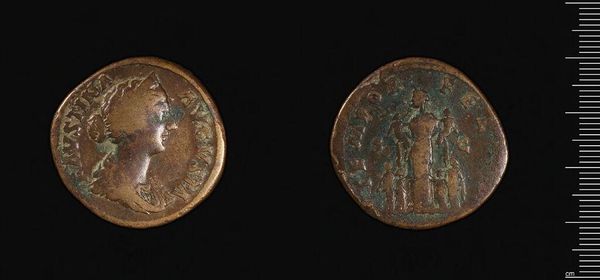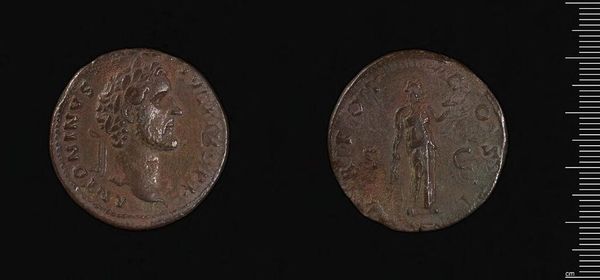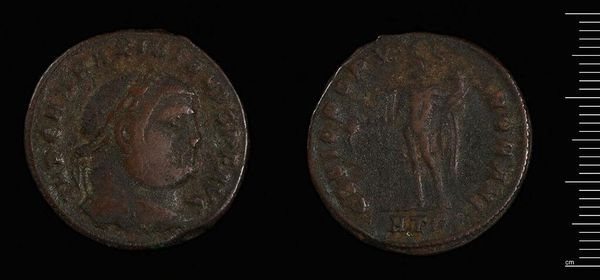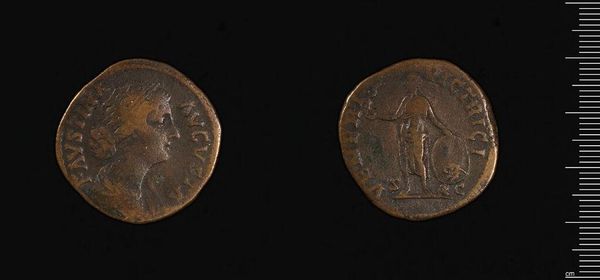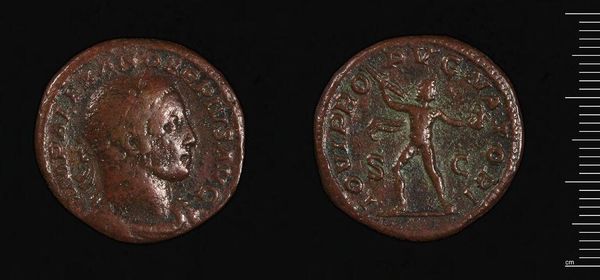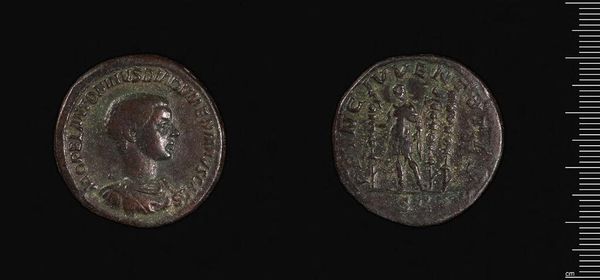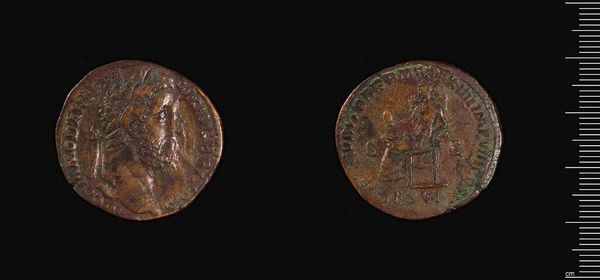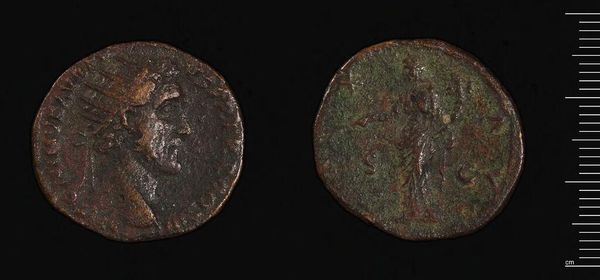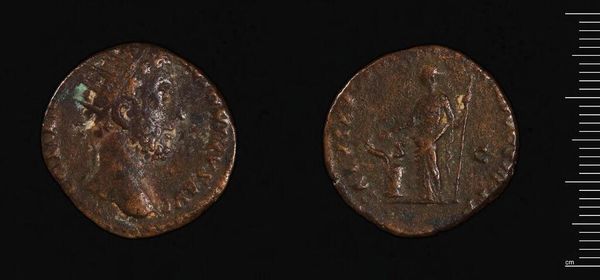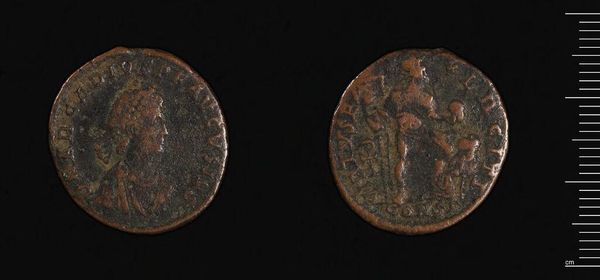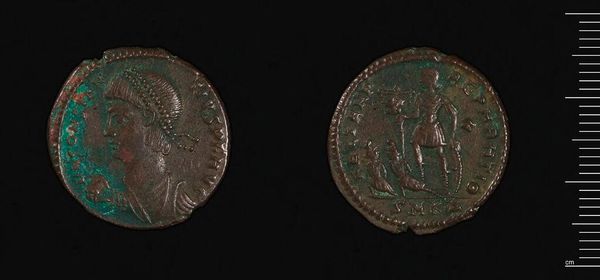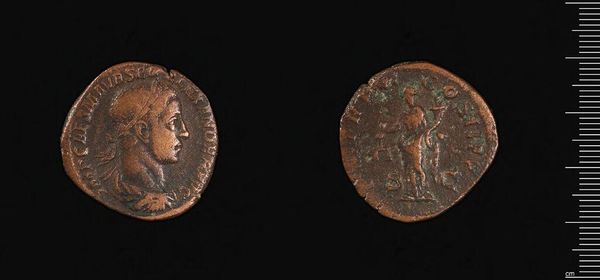
Dimensions: 35.71 g
Copyright: CC0 1.0
Editor: Here we have a sestertius, attributed to Trajan Decius, though it’s actually a forgery. The copper is heavily patinated. How should we approach analysing a piece like this? Curator: Let us proceed by considering the composition. Note the circular format, divided into fields of text and figuration on either side. Observe how the incised profile dominates one side, its lines and texture defining the emperor’s likeness. Do you notice the interplay between the raised surfaces and the recessed inscriptions? Editor: Yes, the contrast is quite striking. Does the materiality of the piece—the worn copper—affect how we perceive it? Curator: Indeed. The corrosion and wear contribute to a sense of age, despite its forged nature. The forger understood the visual language of ancient coinage, creating a powerful illusion through form and texture. It is through the careful study of these elements that we understand the piece. Editor: I see. So, even a forgery can offer valuable insights. Curator: Precisely. It invites us to consider authenticity and representation.
Comments
No comments
Be the first to comment and join the conversation on the ultimate creative platform.
